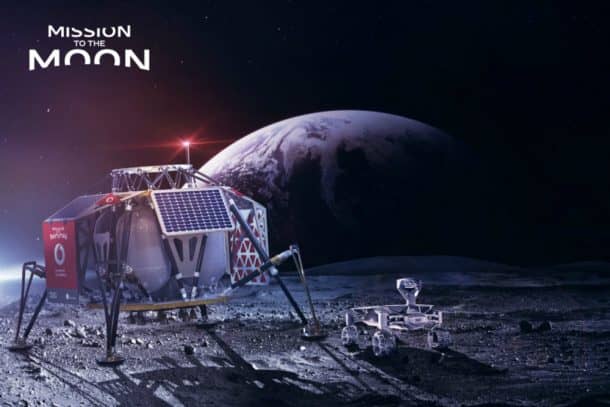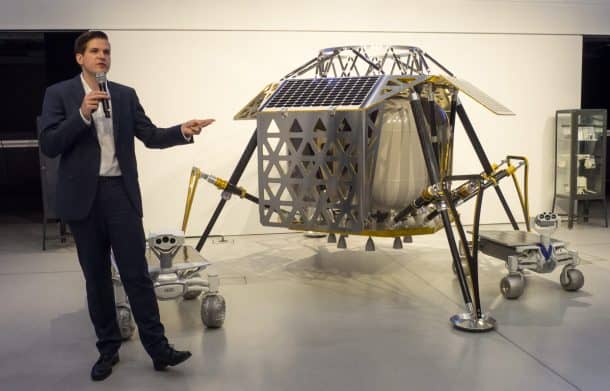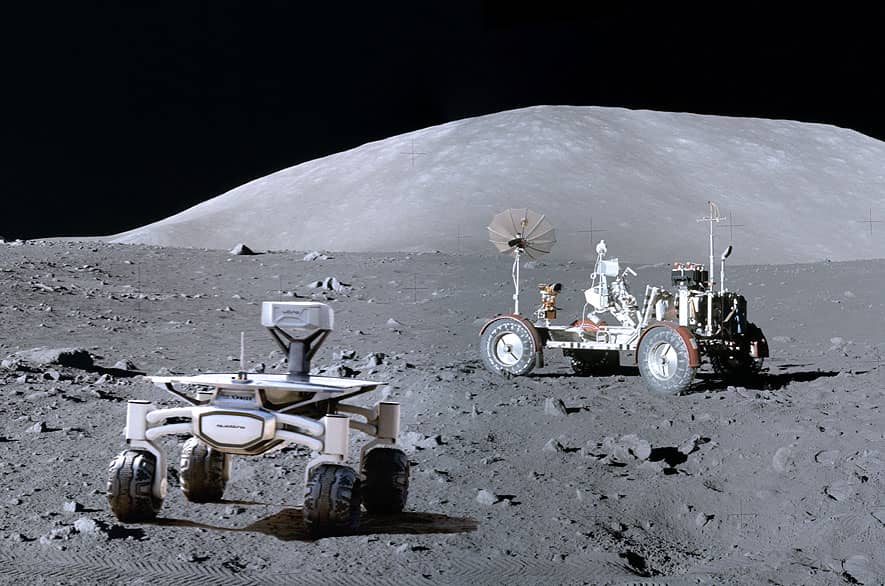Living in space is immensely scary, and all the fears are just multiplied by the fact that you do not get to communicate much to Earth, especially when wandering out for a spacewalk. An astronaut in the future may be able to just call home on his smartphone from the surface of the moon, thanks to the struggles of this German startup. This startup is planning to put up the first telecommunication site on the moon.

PT Scientists, also known as Part Time Scientists, is a German startup behind the idea of installing communication infrastructure on the moon. The company is one of those companies who competed in the Google Lunar X Prize for sending a rover to the moon for visiting the landing site of Apollo 17, the final NASA mission to the moon. PT Scientists wants to use LTE technology for communication with earth, instead of the complex telecom systems.
Karsten Becker, the head of embedded electronics development and integration for PT Scientists, says,
“We are cooperating with Vodafone in order to provide LTE base stations on the moon. What we are aiming to do is to provide commercial service to bring goods to the moon and also to provide services on the surface of the moon.”
The firm has secured a launch contract with Space X as a secondary payload for the Falcon 9 rocket that is planned to launch in 2018. PT Scientists believes that none of the Google Lunar X Prize teams will be able to meet the December 2017 deadline, and thus they withdrew from the competition due to time constraints. The team believes that they will be the first entity to reach the moon even in the late 2018.
Alina, the company spacecraft, will get to the geostationary transfer orbit on Falcon 9. Alina will then get to the moon’s surface all by itself.
“We will soft-land on the moon and disembark our two rovers, the Audi lunar Quattro rovers, with which we are going to drive up to Apollo 17,” Becker explained. “The two rovers are essentially mobile phones that will communicate our video stream to Alina, which serves as an LTE base station, and Alina will communicate the data to us. Using the LTE modem to transmit our data is much more energy efficient than using direct Earth communication.”

The two rovers will study the Apollo 17 spacecraft in detail. They will aslo determine the changes that it has gone through in the 45 years of its stay on the lunar surface. “Alien: Covenant,” a film launched at the beginning of this year, featured the two rovers. The rover requires 90 watts of energy to run that will be provided by its solar panels. Half of this energy is used for the driving while the other half would be used by the modem for communication. However, “with LTE, it’s significantly less,” says Becker.
As the rover communicates the data first to a base station and then to the Earth, there will be no problems with the antenna directions on the rough surface of the moon. Becker added that the firm does not expect Alina to survive the extremely cold nights of the moon. However, they do expect to gain the beneficial experience from the first mission to improve the next missions, eventually establishing a permanent telecommunication infrastructure up there.
Karsten Becker explained the team’s hopes saying,
“We are trying to show that you can use the most widespread means of communication, which is the mobile network and particularly the LTE network, on the surface of the moon, to execute missions there. We are aiming to provide cost-effective solutions to problems that are arising in terms of building the lunar village.”
PT Scientists will conduct another mission to the moon around 2020 to deliver LTE terminals to the lunar surface that have been designed to withstand the harsh environment of the moon for longer periods of time. The European Space Agency has proposed the idea of a lunar village while calling for permanent human presence on the moon. ESA has requested the people of all nations to contribute to the operations with their unique skills.
The Alina spacecraft is designed to carry about 100 kilograms of payload, and the first mission will carry three customers’ payload; one of these is an experiment designed by NASA Ames.
The telecommunication infrastructure is a stepping stone for the future of human colonies on the moon, and it will be many many years before space colonies become a reality for our species.
Our future generations might live on the Moon, who knows!


